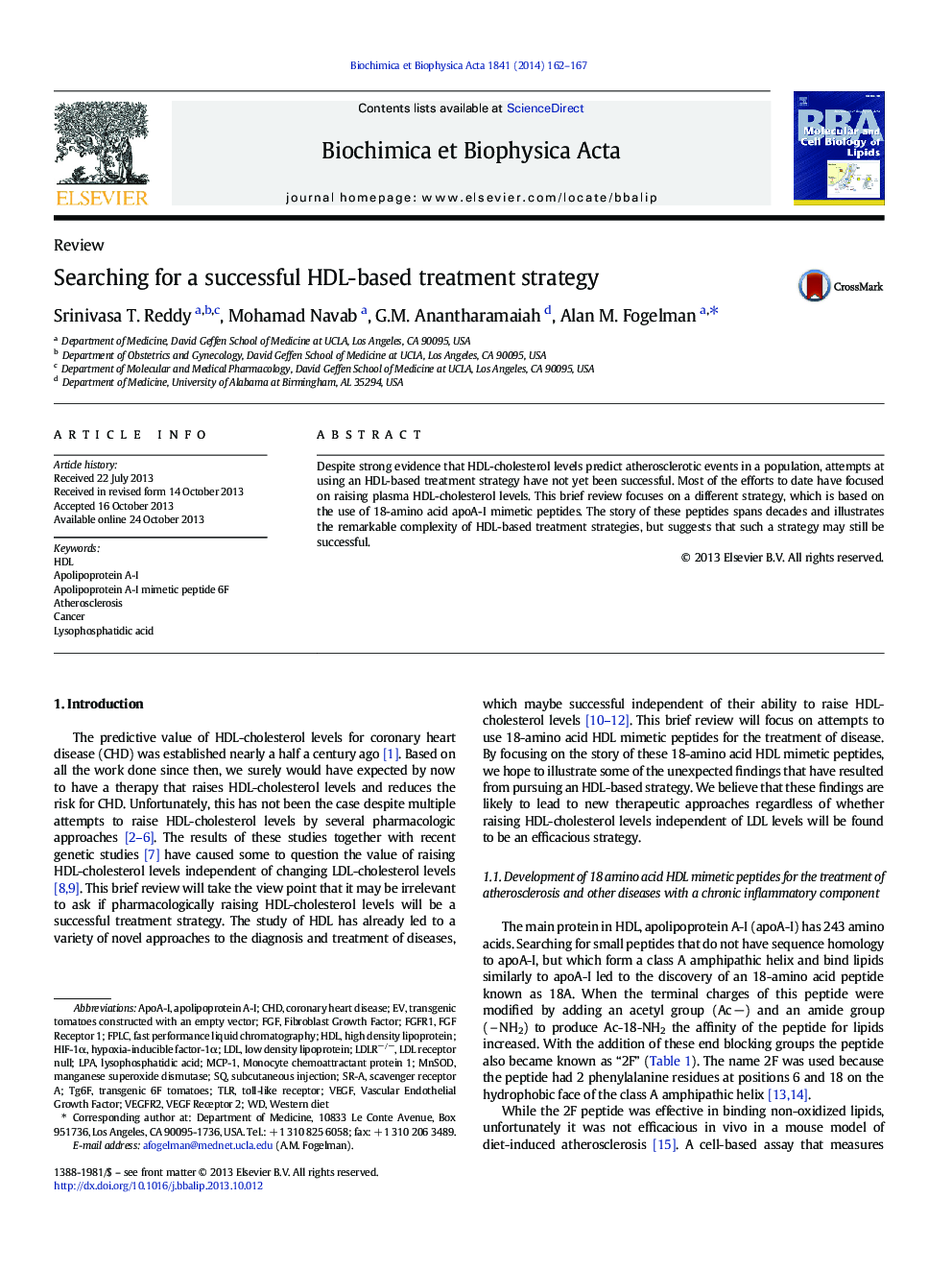| Article ID | Journal | Published Year | Pages | File Type |
|---|---|---|---|---|
| 1949283 | Biochimica et Biophysica Acta (BBA) - Molecular and Cell Biology of Lipids | 2014 | 6 Pages |
•ApoA-I mimetic peptides were initially thought to work in plasma.•Surprisingly, the peptides were found to work in small intestine.•The peptides lower small intestine lysophosphatidic acid levels.•Lowering small intestine lysophosphatidic acid levels lowers plasma levels.•Lowering lysophosphatidic acid levels decreases inflammation & cell proliferation.
Despite strong evidence that HDL-cholesterol levels predict atherosclerotic events in a population, attempts at using an HDL-based treatment strategy have not yet been successful. Most of the efforts to date have focused on raising plasma HDL-cholesterol levels. This brief review focuses on a different strategy, which is based on the use of 18-amino acid apoA-I mimetic peptides. The story of these peptides spans decades and illustrates the remarkable complexity of HDL-based treatment strategies, but suggests that such a strategy may still be successful.
